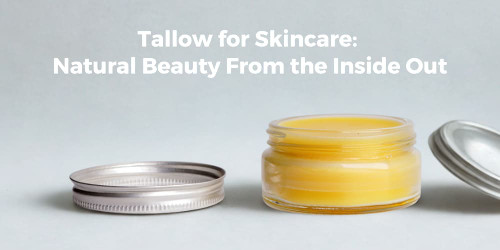No matter if your locks are curly or straight, fine or thick, one thing’s certain: figuring out how to take proper care of hair can be a little tricky. After all, there’s a lot of conflicting information out there, whether it be from the internet or your hairdresser. Luckily, you can trust our expert team at MedCart to provide not only top-of-the-range hair care products but also the most accurate advice. Keep reading for everything you need to know about finding the right hair care routine for you.
Differences in Hair Types
One of the important steps in developing a new hair care routine is figuring out your hair type. Each hair type has unique characteristics and requires a different level of care from the other. There are four main types of hair:
Straight
Straight hair is more prone to greasiness than other hair types as oil from the scalp travels down the hair shaft faster. Due to this propensity to become greasy, the most important part of caring for straight hair is keeping it clean. This doesn’t necessarily mean shampooing or conditioning it more often, but instead shampooing your hair at least twice per wash and avoiding shampoos designed for ‘dry’ or ‘damaged’ hair. A high-quality dry shampoo can also help soak up any excess oil between washes, while a texturising product is recommended for adding volume.
Wavy
The main challenge for those with wavy hair is preventing it from becoming frizzy. You’ll want to add moisture and volume to combat frizziness, which can be difficult to do without losing your natural wave. Some of the recommended hair care tips to achieve this include using hydrating shampoos and conditioners, using a diffuser when blow-drying and applying moisturising hair masks around once a week.
Curly
Frizz is also an issue that can affect people with curly hair. Like wavy hair, the key to preventing frizz is keeping your hair moisturised with hydrating shampoos and conditioners, as well as hair masks, creams, oils and mousses. There are also techniques you can use to make your curls more defined, such as using a wet brush to detangle your hair straight after getting out of the shower and blow-drying with a defuser.
Highly curly/kinky
Highly curly or kinky hair usually has very tight curls and a coarse texture. This hair type can be sensitive to heat damage, so it’s best to towel or air-dry it and use a leave-in conditioner to increase moisture levels. It’s also recommended to use shampoo and conditioner that’s specifically formulated to hydrate curly or kinky hair.
Caring for Bleached or Dyed Hair
Hydration is the key to keeping your bleached or dyed hair healthy. Colouring treatments can strip moisture from your hair, so it’s recommended to use products such as a hydrating shampoo and conditioner that is free from harsh chemicals like sulphates. You can also use other hair care products like hair masks or even coconut oil to add more moisture to your hair.
Another tip for caring for coloured hair is getting regular haircuts. As our hair’s ends are the most prone to damage, getting a haircut will ensure you don’t develop split ends and possibly cause breakage to the entire length of your hair.
How to Care for Your Hair Daily
If you’ve found yourself wondering, “how can I care for my hair daily?” then we suggest adhering to the following tips:
Determine how often your hair needs to be washed
Unless you exercise rigorously each day or live in a place with a very humid climate, you probably don’t need to wash your hair daily. As a general rule of thumb, aim to wash your hair every two to three days, depending on your hair type. Those with straight hair will often need to wash their hair more regularly than people with curly hair due to its tendency to become greasy. Along with it being visibly oily, other signs you need to wash your hair include an itchy scalp or flaking from dirt. You can also utilise hair products that allow you to go longer between washes if need be, like dry shampoo.
Shampoo and condition your hair correctly
Another vital step of daily hair care is shampooing and conditioning your hair correctly. This involves not only using the right shampoo and conditioner for your hair type but knowing the correct method for washing your hair. It is best to ensure your hair is thoroughly wet before applying the shampoo and that you lather the shampoo in your palms before working it through your roots. Once the shampoo is rinsed out, apply conditioner to the ends of your hair and rinse it with cold water.
Use chemical-free shampoos
Using chemical-free shampoos is just as important as using the right shampoos for your hair type. We recommend avoiding shampoos with harsh ingredients like sodium lauryl sulphate or ammonium lauryl sulphate. While shampoo with sulphates can effectively remove dirt from your hair, it can also strip it of its natural oils, which is particularly concerning for those with dry hair. Chemical-free shampoos are also more efficient at strengthening damaged hair and helping maintain coloured hair.
Eat healthily
Hair is mostly made up of protein, so eating protein-rich foods can help you avoid hair loss and keep your hair strong. Some high-protein foods you can add to your trolley include fish, meat, beans, eggs, nuts and leafy green vegetables.
What to Avoid
Chemicals
As we’ve discussed, chemicals in shampoo, conditioner or other hair care products can damage your hair and prevent it from growing. We recommend instead buying chemical-free products.
Using too much heat on your hair
While many of us like using tools like curlers and straighteners on our hair, relying too heavily on heat styling can make hair dryer and more prone to breakage. We suggest looking into heat-free methods of styling your hair or using a lower heat setting on your tools. If you want to continue using heat styling products, then it’s essential to also use a heat-protectant spray.
Using too many products
Applying too many products to your hair can cause it to become weighed down and excessively oily. This happens when your hair strands aren’t able to absorb all of the product applied, leading it to sit on top of the strands. We suggest opting to use products with the same key ingredients or from the same brand to ensure they’re compatible with each other.
Stress
Yes, stress can cause hair loss. The condition that links hair shedding with stress is called Telogen effluvium, which refers to stress sending your hair follicles into the shedding phase. Although stress can sometimes be unavoidable, we recommend practising relaxation techniques like meditation or yoga, as well as getting regular exercise to help combat it.
Conclusion
Once you’ve worked out your perfect hair care routine, the next step is to arm yourself with the high-quality items that will help you achieve it. At MedCart, we stock hundreds of top-of-the-range hair care and styling products that will transform your hair from drab to fab. Check out our extensive range today!















